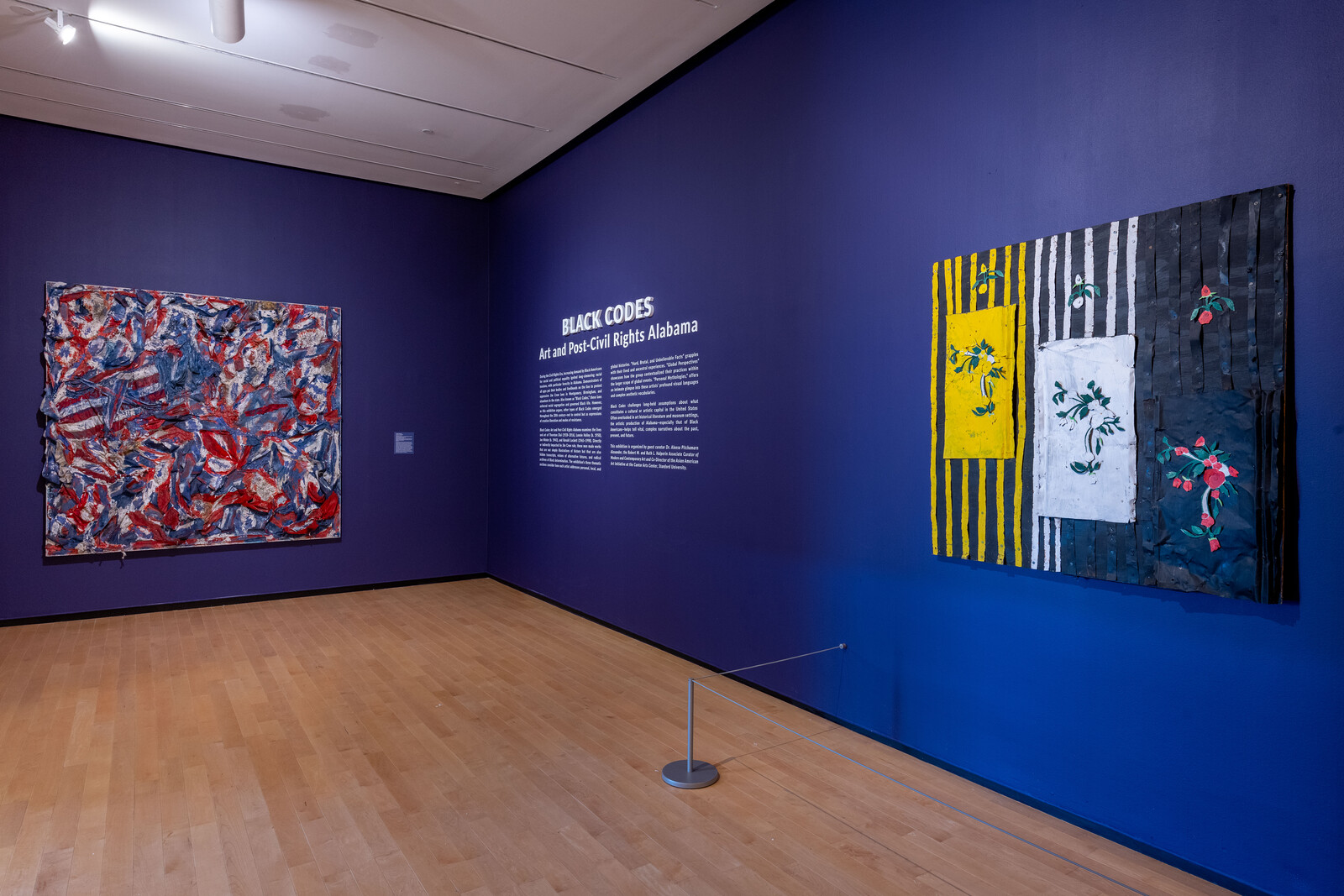Art and Post-Civil Rights Alabama
January 23–July 7, 2024
901 South College Street
Auburn, Alabama 36830
United States
Hours: Tuesday–Sunday 10am–4:30pm,
Thursday 10am–8pm
T +1 334 844 1484
jcsm@auburn.edu
Artists: Thornton Dial, Lonnie Holley, Ronald Lockett and Joe Minter.
Black Codes: Art and Post-Civil Rights Alabama, an exhibition highlighting the lives and works of four pivotal Alabama artists, is on view at The Jule Collins Smith Museum of Fine Art at Auburn University. Available to the public through Sunday, July 7, “Black Codes” features works from Thornton Dial (1928–2016), Lonnie Holley (b. 1950), Ronald Lockett (1965–98) and Joe Minter (b. 1943), artists who were directly or indirectly impacted by Jim Crow laws, also known as Black Codes.
The exhibition’s guest curator, Dr. Aleesa Pitchamarn Alexander of the Cantor Arts Center at Stanford University, visited Auburn for the inaugural Auburn Forum for Southern Art and Culture. “I think this type of project is exactly what university art museums do best,” Alexander said. “I love university art museums because they do these types of projects that are really research-driven, embedded in history, artist-centric, asking difficult questions and examining narratives in ways that larger art museums are frankly afraid to do in significant ways.”
During the Civil Rights era, increasing demand by Black Americans for social and political equality ignited long-simmering racial tensions with particular ferocity in Alabama, as demonstrators protested Jim Crow rule. Alexander’s guest-curated exhibition for The Jule argues, through the artists’ works, that other types of Black Codes emerged as expressions of creative liberation and means of resistance. The exhibition examines how each artist addresses personal, local and global histories, compels viewers to ask who and what serves as historical record and how it’s constructed, and calls into question what constitutes a cultural and artistic capital.
Speaking at the Auburn Forum, Holley discussed his and the other artists’ use of found materials. “I’ll go around and get material that ain’t been used by other people and put them together with a story of the people’s labor and appreciation to those people,” Holley said. “It helps you look back at your grandmama, your granddaddy, your great-grandparents, and see what they have done.”
“That’s something that I’ve always really respected about your practice – the way that you understand that materials have their own intelligences and their own histories and that part of your role as an artist is finding ways to access that,” Alexander said.
But the four exhibited artists did not just grapple with cultural and historical events; Dial, Minter, Holley and Lockett were active and part of an informal artist community in the Birmingham and Bessemer areas in the 1980s and 1990s, making pieces to explore themselves as individuals and with one another. Many of Dial’s early pieces feature colorful tigers as stand-ins for himself and embodiments of Lockett – who was also Dial’s cousin – often portrayed as a buck. Snakes, a Biblical symbol of sin and evil, appear in pieces, as well as insects and other fauna.
Holley and Alexander discussed traditional art historical education and how Black artists, particularly the four artists exhibited, have been left out of the historical canon. “We was considered to be outsiders,” Holley said. “And we wasn’t actually being celebrated for the titles [of African American artists] that we was wearing.”
Alexander noted the divergence of academic history from the lived experiences of people as foundational to her work as a curator: “When I was in graduate school, you’re so entrenched in seminars and books, and that is where you think art history lives. But when I met you, it made me really realize that […] history lives in people, that you are the bearers of historical memory.”






